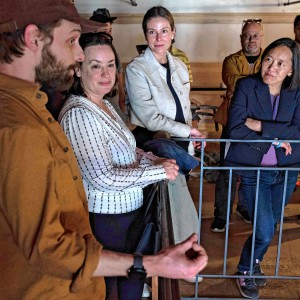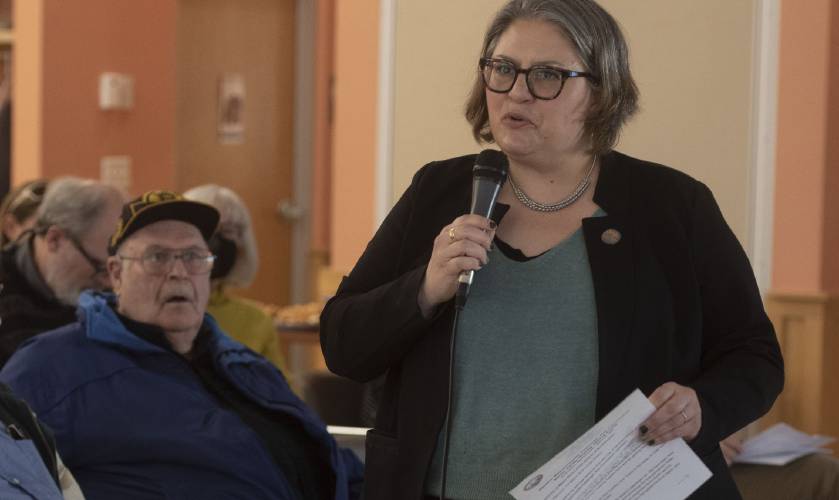Guest columnist Bill Dwight: How to make sense of Northampton’s school budget dilemma
| Published: 04-19-2024 11:36 AM |
Before 2013, our school budget process was an annual exercise in misery. Then it wasn’t. Now it is again. A review of the history can help get us back on track.
Proposition 2½ limits to 2.5% how much Massachusetts cities can annually increase their total property tax revenue. As that’s about a half-point lower than the average rate of inflation, cities often shrink budgets unless voters agree to raise property taxes in override referendums.
Northampton rejected overrides in 1992 and 2004. And beginning in 2004, Northampton suffered a sharp drop in state aid. A third of our city’s school spending used to be covered by the commonwealth. Today, it’s one-sixth.
Between 2005 and 2013, the Northampton Public Schools budget rarely received a spending increase higher than 3%. Usually the number was at or near zero.
To establish more reliable funding of city services, in 2013 Mayor David Narkewicz proposed a $2.5 million override tied to a Fiscal Stabilization Plan. Much of the added revenue would go in a stabilization fund, intended to last for at least four years. During that period, as costs climbed and unexpected needs materialized, the city could draw from the fund to maintain budget balance.
The override passed. With help from a triple-A bond rating, economic growth and new revenue streams — a hotel tax, a meals tax and a cannabis tax — the override funds lasted for seven years.
In turn, the school budget enjoyed stable growth. Between fiscal years 2014 and 2020, annual spending increases were mostly around 3%, helping support 53 new staff positions, increased pay and infrastructure upgrades.
Article continues after...
Yesterday's Most Read Articles
 A Waterfront revival: Two years after buying closed tavern, Holyoke couple set to open new event venue
A Waterfront revival: Two years after buying closed tavern, Holyoke couple set to open new event venue
 Island superintendent picked to lead Amherst-Pelham region schools
Island superintendent picked to lead Amherst-Pelham region schools
 Music key to Northampton’s downtown revival: State’s top economic development leader tours city
Music key to Northampton’s downtown revival: State’s top economic development leader tours city
 Pro-Palestinian encampment disperses at UMass, but protests continue
Pro-Palestinian encampment disperses at UMass, but protests continue
 Area property deed transfers, May 2
Area property deed transfers, May 2
 Amherst council hears call to scale back Jones work
Amherst council hears call to scale back Jones work
In 2020, voters effectively renewed the Fiscal Stabilization Plan by approving another $2.5 million override.
Then the School Committee strayed from the plan, and budget misery came back.
Between 2020 and 2023, a net of 46 full-time equivalent school positions were added. A three-year contract that began in 2023 further increased staff pay. Overall, school spending levels jumped 5% in 2023 and 7.4% in 2024.
This would be an understandable response to the pandemic and the nationwide shame of low teacher pay, except School Committee members didn’t identify recurring revenue to cover new recurring expenses.
They used pandemic money from the federal government, now spent. They tapped the school choice account, which receives money when out-of-district students choose our public schools. The fund topped $4.1 million in 2020. Now it’s depleted.
The last three annual budget messages from Mayor Gina-Louise Sciarra warned the School Committee its budgeting was unsustainable. Last year she plugged a $1.2 million hole with money from the city’s stabilization fund on the understanding that cuts would have to follow.
The cuts didn’t happen. The deficit is now $4.77 million, outpacing the $4 million in the stabilization fund.
The mayor said school spending could be 4% higher than last year if we return to the Fiscal Stability Plan. Historically, 4% is robust. But because of past reliance on one-time funds, staff cuts would be unavoidable. Superintendent Portia Bonner provided a version with an 8% increase, but that still involved staff cuts while leaving unresolved a $2.75 million deficit.
Instead, the School Committee sent the mayor a budget with a 17% increase, without staff cuts or a deficit fix.
Some School Committee members concede that the mayor is not hiding a “pot of gold.” She cannot close the school budget gap by crudely chopping $4.77 million for essential services delivered by non-school departments. They operate on tight budgets much smaller than the school department. Last year the city’s general fund put $37.8 million into direct school spending (not counting indirect spending such as $7.8 million for school employee benefits). In comparison, the Fire Rescue budget was $7.3 million, public works cost $4.3 million, and health and human services cost $2.4 million.
Several members claimed they had to “advocate” for the schools, leaving to the mayor and City Council the job of budget balancing. (Under state law, if a mayor’s budget includes less for schools than the School Committee’s recommendation, a two-thirds council majority can cut elsewhere to add back school spending.)
But advocacy for students does not mean abdication of responsibilities. Across city government, department heads work with the mayor on budgeting. They advocate for their respective departments, but accept the limitations of finite resources. They provide expert assessments of what’s truly essential now and what can wait. Only then can the mayor balance the city’s needs and numbers.
One School Committee member said, “what expenditures in the city budget are more important than kids learning to read?” This is a false choice. Municipal budgets include many essential services of equal importance, such as transportation, first response, clean water, waste management, and libraries. School budget cuts can be implemented without causing illiteracy. Framing the discussion as a matter of ranking services needlessly pits constituencies against each other.
Instead of fomenting division, we must get back to the Fiscal Stability Plan. We can explore long-term cost savings — such as school consolidation or a regional district with neighboring communities — that can free up dollars for increased school staffing. But fiscal stability comes first. We can’t spend money we don’t have.
Bill Dwight served on the Northampton City Council for 18 years and is a former Northampton public school parent.



 Guest columnist Gene Stamell: We know what we know
Guest columnist Gene Stamell: We know what we know Jennifer Dieringer: Budget must serve whole city
Jennifer Dieringer: Budget must serve whole city Ken Rosenthal: Time to change direction on Jones Library
Ken Rosenthal: Time to change direction on Jones Library Sage Cooper-Clermont: A well-deserved thank you for chain of help
Sage Cooper-Clermont: A well-deserved thank you for chain of help
